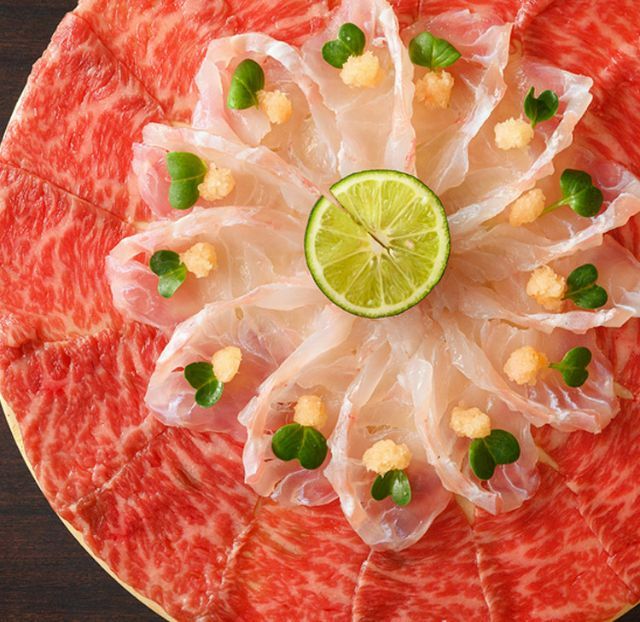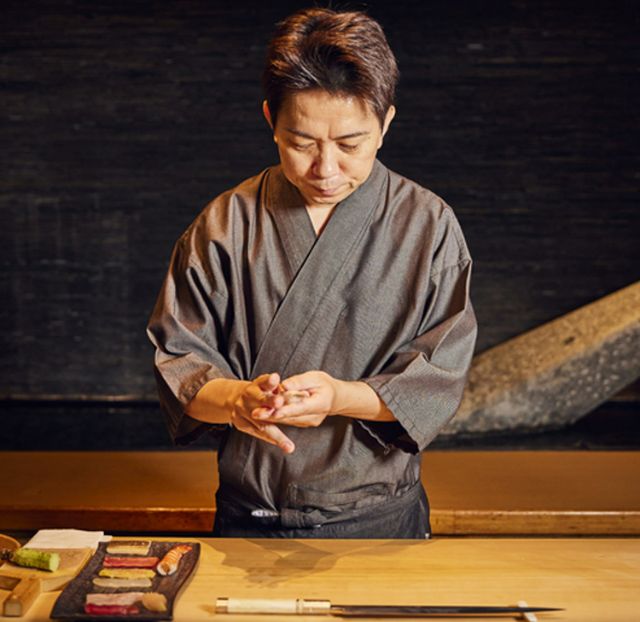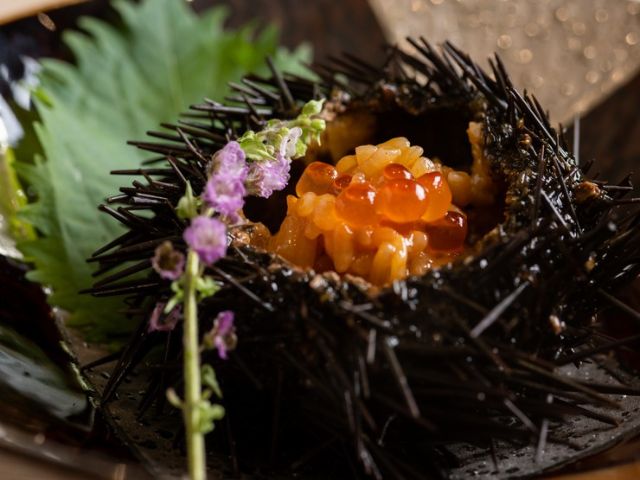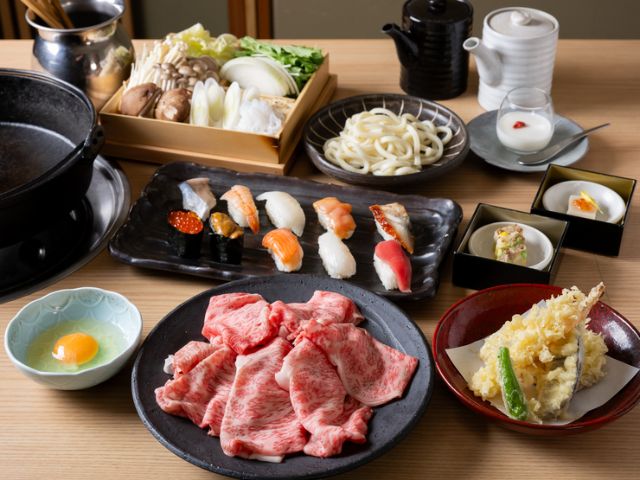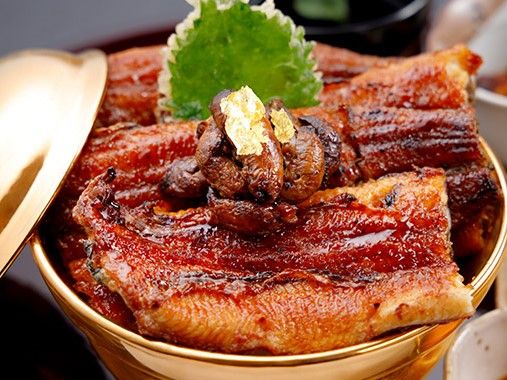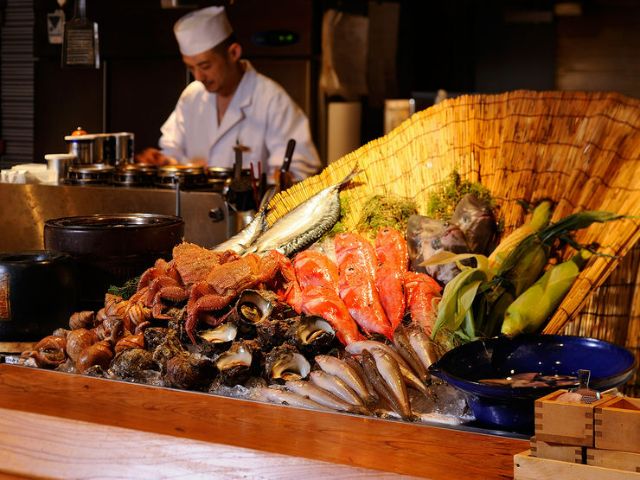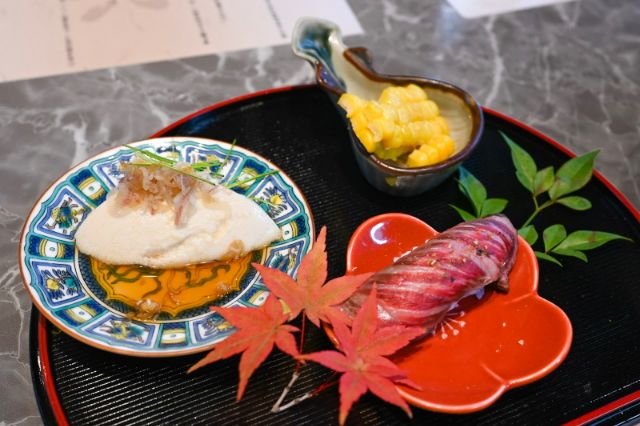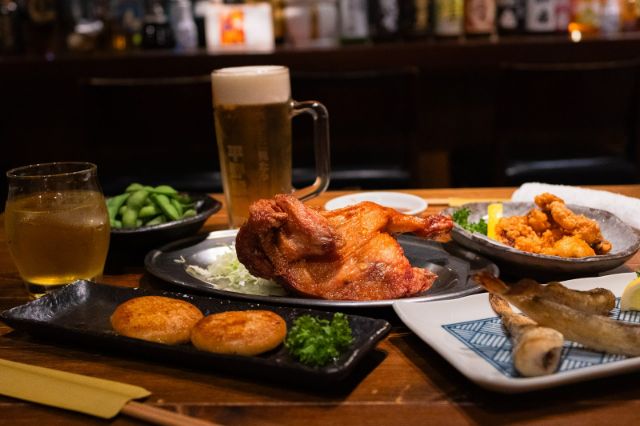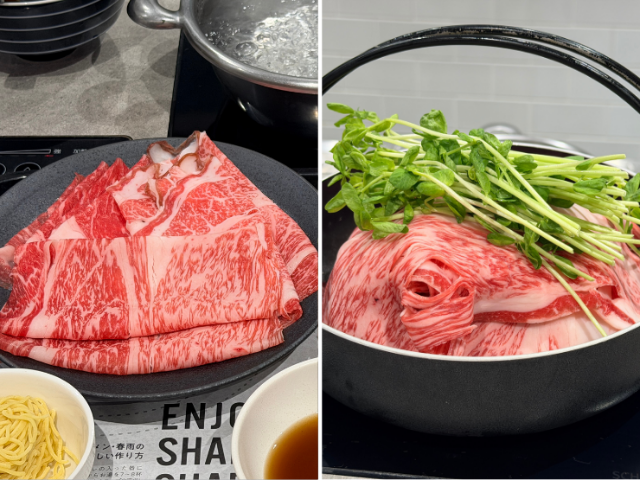15 Best Restaurants in Ginza for Outstanding Sushi
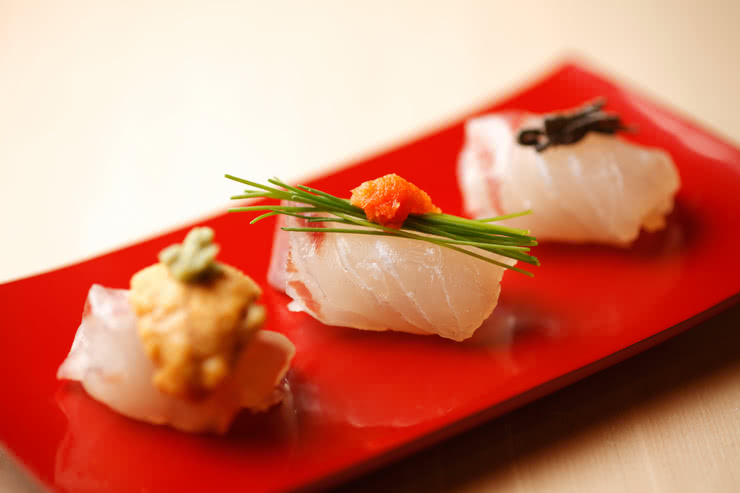
1. Sushi -HAN-


Sushi -HAN-
Closed: Monday
Average price: [Dinner] 20,000 JPY / [Lunch] 10,000 JPY
Access: 2-minute walk from Ginza Station on the Tokyo Metro Lines/ 3-minute walk from Higashi-ginza Station on the Tokyo Metro Lines
Address: B1F, Azuma bldg., 5-9-17, Ginza, Chuo-ku, Tokyo Map
More Details Reservation
2. Sushi Takaya
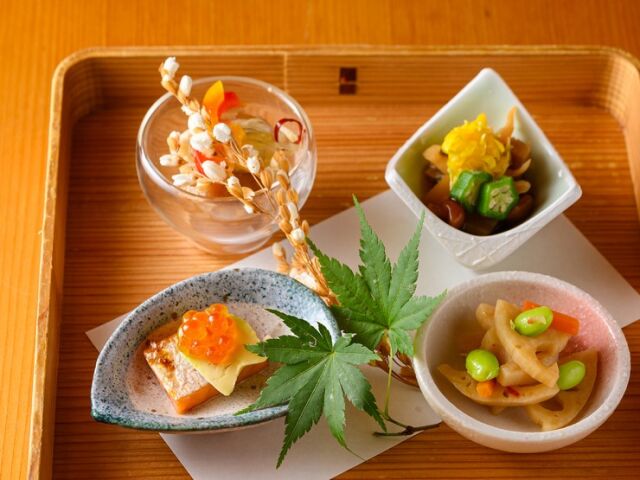
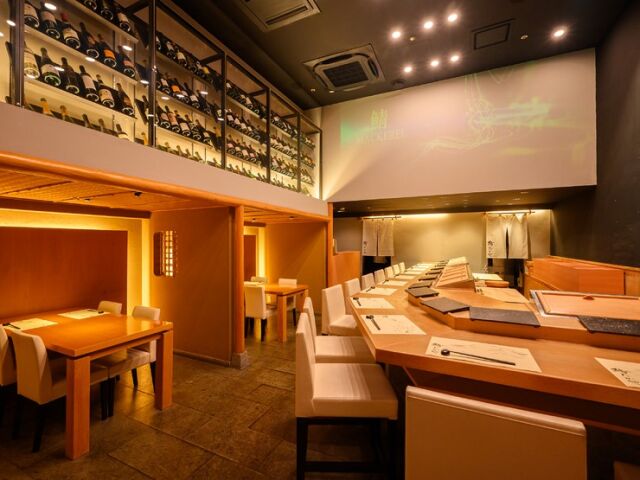
Sushi Takaya
Closed: None
Average price: [Dinner] 25,000 JPY / [Lunch] 18,000 JPY
Access: 5-minute walk from Ginza Station on Tokyo Metro Marunouchi/Ginza Lines, 5-minute walk from Shimbashi Station/Yurakucho Station on JR Yamanote Line
Address: B1F, Ginza Lee Bldg., 7-3-9, Giinza, Chuo-ku, Tokyo Map
More Details Reservation
3. Ryoheisushi
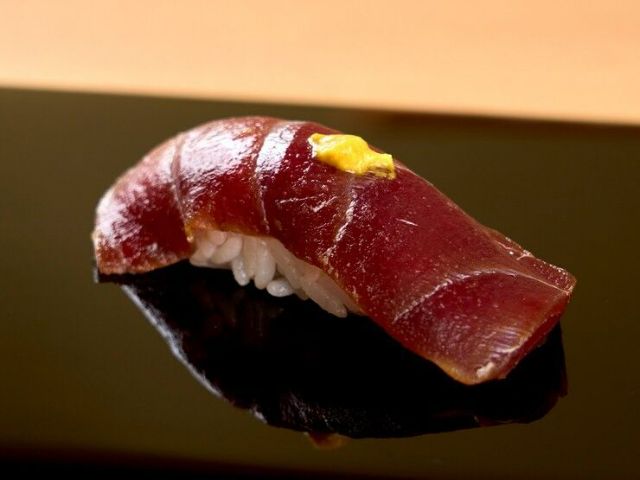

Ryoheisushi
Closed: Sunday, National Holidays
Average price: [Dinner] 20,000 JPY / [Lunch] 7,000 JPY
Access: 3-minute walk from Exit 10 of Ginza-itchome Station on the Tokyo Metro Yurakucho Line. Located opposite the Hotel Sunroute.
Address: B1F, Ginza Wing Bldg., 1-14-5, Ginza, Chuo-ku, Tokyo Map
More Details Reservation
4. Tsukiji Suzutomi GINZA SIX branch
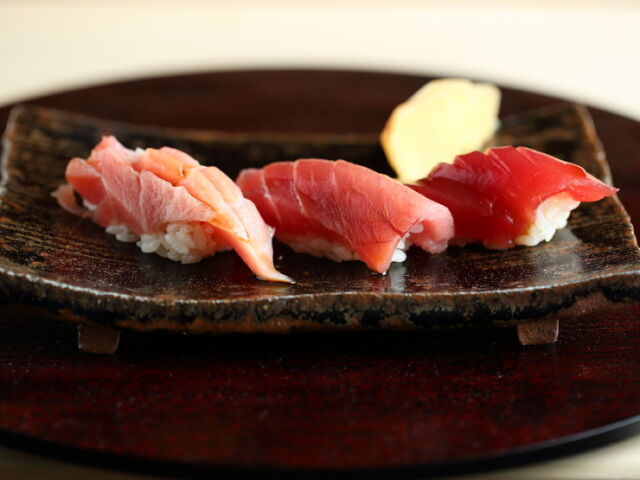

Tsukiji Suzutomi GINZA SIX branch
Closed: None
Average price: [Dinner] 18,000 JPY / [Lunch] 8,000 JPY
Access: 2 minutes walk from A2 exit of [Ginza Station] on Tokyo Metro Lines / 3 minutes walk from A1 exit of [Higashi Ginza Station] on Toei Asakusa Line
Address: 13F, GINZA SIX, 6-10-1 Ginza, Chuo-ku, Tokyo Map
More Details Reservation
5. Ginza Sushi Inada
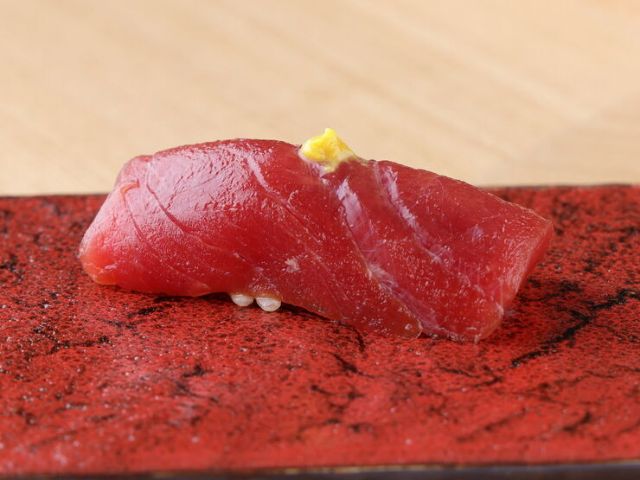
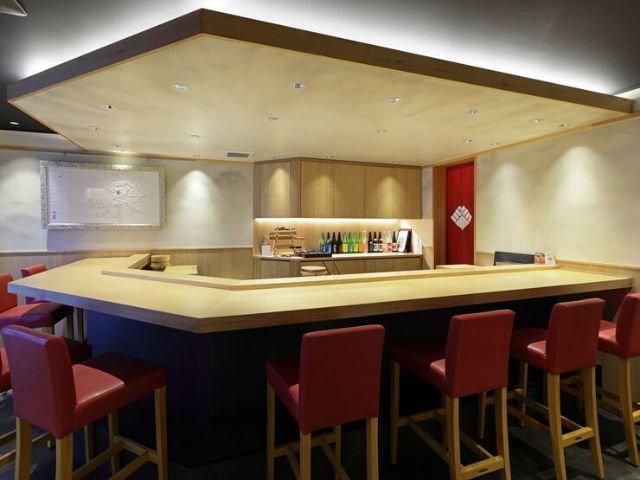
Ginza Sushi Inada
Closed: Wednesday
Average price: [Dinner] 17,000 JPY / [Lunch] 10,000 JPY
Access: 3-minute walk from Higashi-ginza Station Exit 4 / 6-minute walk from Ginza Station Exit A3 on the Tokyo Metro Ginza Line / 6-minute walk from Tsukijishijo Station Exit A3 on the Toei Oedo Line
Address: 6F, Ishiwada Bldg., 5-14-9, Ginza, Chuo-ku, Tokyo Map
More Details Reservation
6. Koromo Sushi
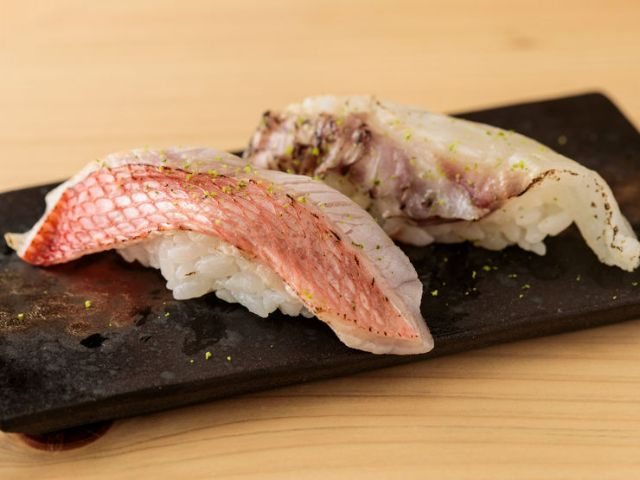
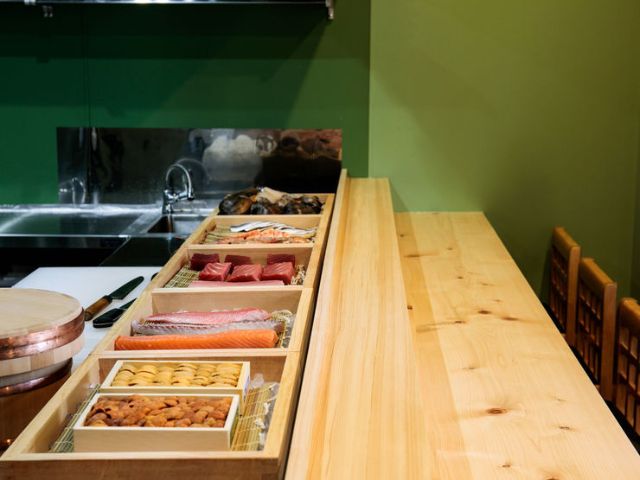
Koromo Sushi
Closed: Irregular
Average price: [Dinner] 5,000 JPY / [Lunch] 2,000 JPY
Access: 5-minute walk from [Tsukiji Station] on the Tokyo Metro Hibiya Line
Address: 4-11-3, Tsukiji, Chuo-ku, Tokyo Map
More Details Reservation
7. Shutoku 2nd Branch
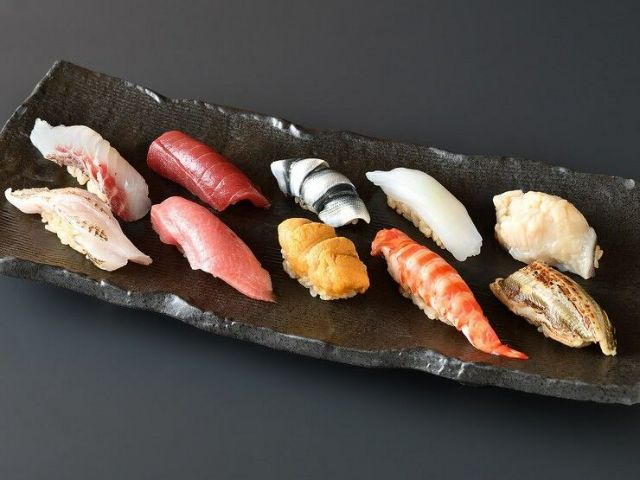
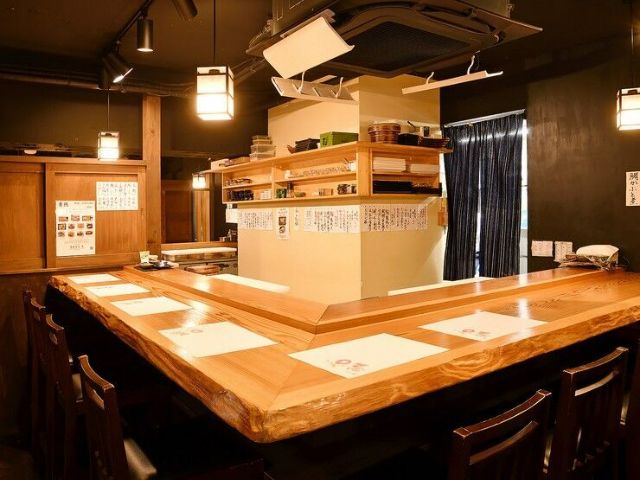
Shutoku 2nd Branch
Closed: None
Average price: [Dinner] 10,000 JPY / [Lunch] 5,000 JPY
Access: 7 minutes walk from Exit1 or Exit2 of Tsukiji Station on the Tokyo Metro Hibiya Line
Address: 2F, Miyazaki Bldg., 6-26-7, Tsukiji, Chuo-ku, Tokyo Map
More Details Reservation
8. SUSHI SHIOGAMAKOU GINZA KIWAMI (Ginza)
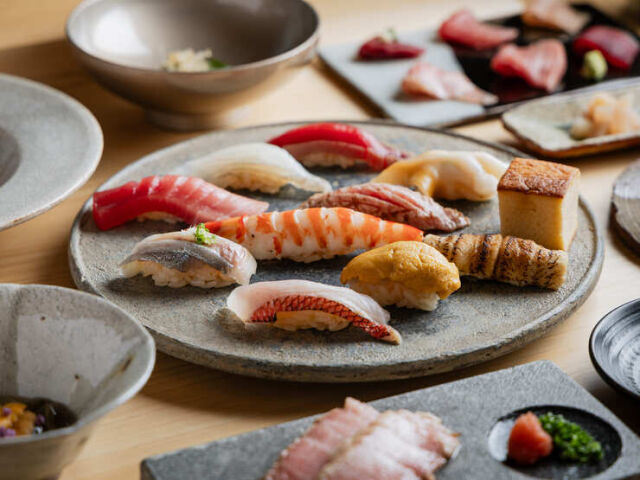

SUSHI SHIOGAMAKOU GINZA KIWAMI
Closed: Sunday, National Holidays
Average price: [Dinner] 30,000 JPY / [Lunch] 12,000 JPY
Access: 5-minute walk from Ginza Station on Tokyo Metro / 10-minute walk from JR Yurakucho Station
Address: 12F, HULIC&New GINZA MIYUKI5, 5-5-12, Ginza, Chuo-ku, Tokyo Map
More Details Reservation
9. Sushi Fujita (Higashi Ginza)

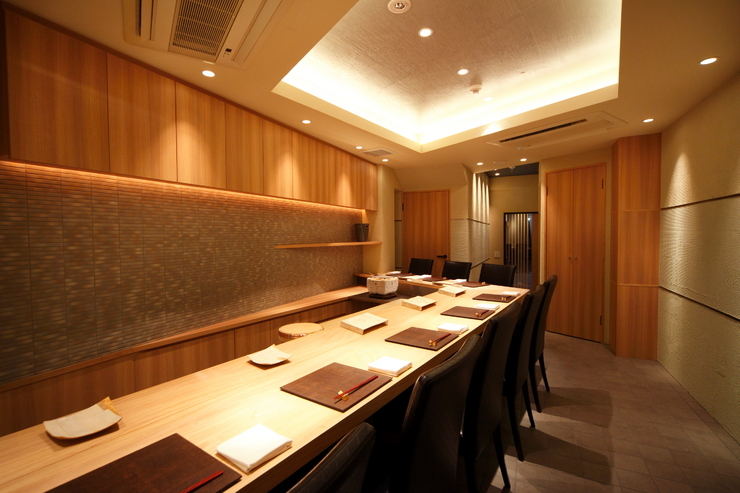
Sushi Fujita
[Weekdays] Normal hours: 5:30 PM - 11:00 PM (Last order: 10:00 PM)
[Saturdays, Sundays, Holidays] Normal hours: 5:30 PM - 11:00 PM (Last order: 10:00 PM)
Closed: Tuesdays
Average price: [Dinner] 12,000 JPY / [Lunch] 4,000 JPY
Access: Three-minute walk from Higashi-Ginza Station. Depart through Exit A7, and turn right at the first corner. Turn left at the third corner, and it will be on your left-hand side.
Address: Niiyama Building 1F, Ginza 3-13-5, Chuo, Tokyo (Map)
More Details
10. Sushi Kanesaka (Shimbashi)
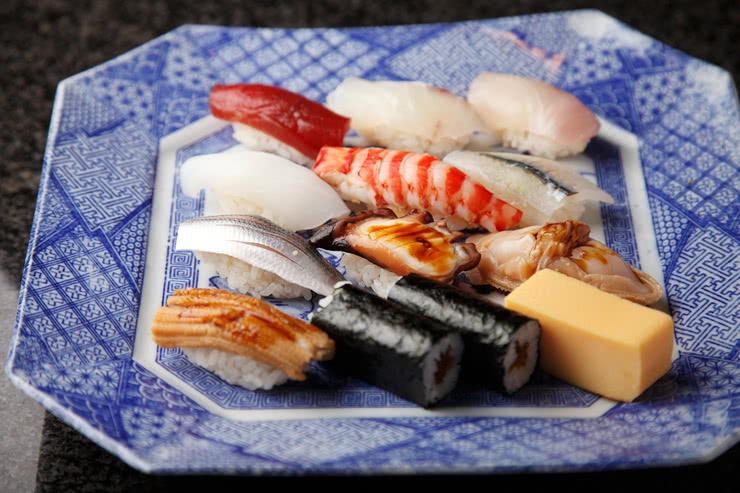

[Ohiru Okimari] are lunch sets available at three prices (5,250 JPY, 10,500 JPY, and 15,750 JPY), so you can choose depending on your budget and appetite. The sushi toppings are on the narrow side and are prepared perfectly with the sushi rice so that they stay together when picked up with chopsticks but fall apart in the mouth. This is a great place to enjoy the artistry of the sushi chefs.
Sushi Kanesaka
[Weekdays] Dinner: 5:00 pm - 10:00 pm
[Saturday, Sunday] Dinner: 5:00 pm - 9:00 pm
Closed: Tuesdays
Average price: [Dinner] 21,000 JPY / [Lunch] 5,250 JPY
Access: 3-minute walk from JR Shinbashi Station/5-minute walk from Tokyo Metro Ginza Station
Address: Misuzu Bldg. B1F, 8-10-3 Ginza , Chuo-ku, Tokyo (Map)
More Details
11. Ginza Sushi Dokoro Shin (Ginza)
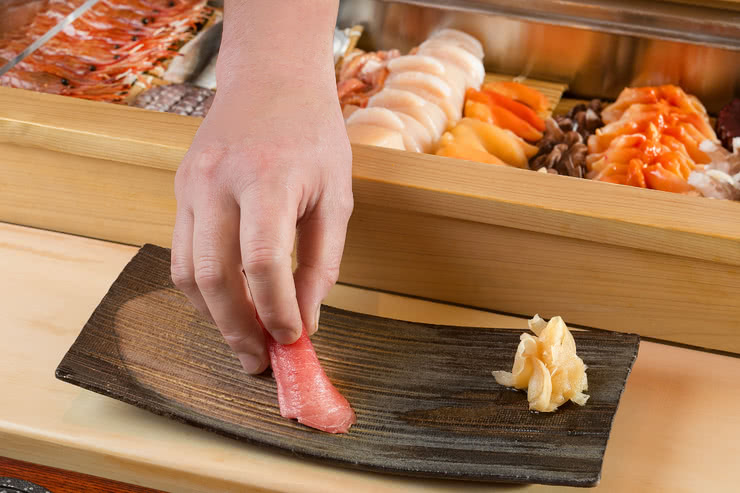

In addition to the sushi made with high-end ingredients, such as chutoro (medium fatty tuna) from Oma and Botan shrimp, the a-la-carte dishes starting at 600 JPY are also recommended! They are items made with fresh seafood and a lot of love and care.
Ginza Sushi Dokoro Shin
[Weekends] Lunch 11:30 AM-2 PM (last order 2 PM)/Dinner 5:30 PM-10:30 PM (last order 10:30 PM)
Closed: Mondays
Average price: [Dinner] 10,000 JPY / [Lunch] 2,500 JPY
Access: About a 5 minute walk from Tokyo Metro "Ginza Station" exit A1. Next to Courtyard Marriott Ginza Toubu Hotel.
Address: Way Fair Bldg. 1F , 7-12-4 Ginza , Chuo-ku, Tokyo (Map)
More Details
12. Ginza Fujita (Shimbashi)


The restaurant offers a great selection of course meals to choose from, starting with the eight-course [Choji Course] (10,800 JPY) that includes sashimi, tempura, and five pieces of sushi.
Ginza Fujita
Closed: None
Average price: [Dinner] 20,000 JPY
Access: A 5-minute walk from Shinbashi Station. Head towards Ginza on Chuo Street and you'll find it next to Ginza 888 Building, inside Dai 3 Soware Do Building on the basement level.
Address: Dai-3 Soiree de Bldg. B1F, 8-8-7 Ginza, Chuo-ku, Tokyo (Map)
More Details
13. Beef Sushi Kintan
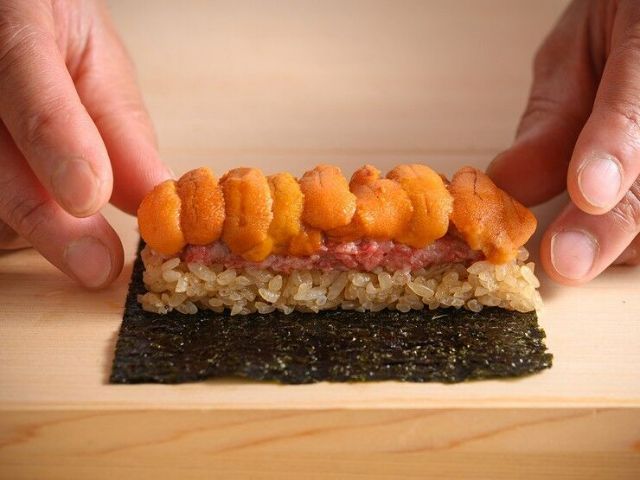

Beef Sushi Kintan
Closed: Monday
Average price: [Dinner] 16,000 JPY / [Lunch] 5,000 JPY
Access: 6-minute walk from CI Exit of Ginza Station on Tokyo Metro Ginza Line / Hibiya Line / Marunouchi Line, 6-minute walk from Ginza Exit of Shimbashi Station
Address: 3F, FPG links GINZA Corridor, 8-2-16, Ginza, Chuo-ku ,Tokyo Map
14. Sushi Rakuichi


Sushi Rakuichi
Closed: Saturday, Sunday, National Holidays
Average price: [Dinner] 6,000 JPY
Access: 8-minute walk from Karasumori Exit of Shimbashi Station on JR Line
Address: 1F, Hori Bldg., 3-3-3, Shimbashi, Minato-ku, Tokyo Map
More Details Reservation
15. Otaru Masazushi Ginza (Ginza-itchome)
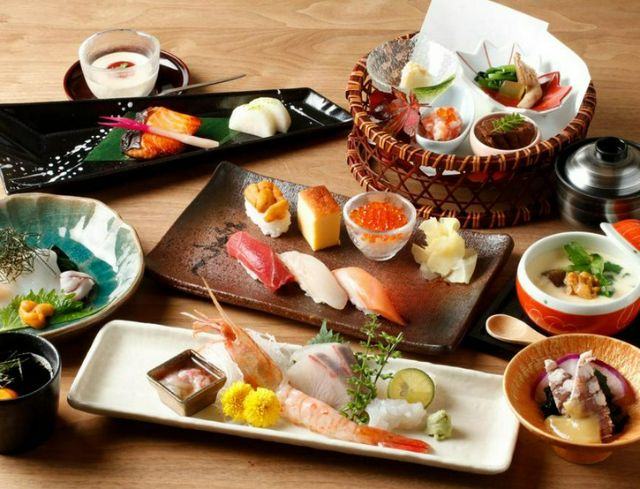

The ingredients are delivered directly from Hokkaido, and skillful craftsmanship ensures the provision of fresh sushi and sashimi. The interior offers counter seats, table seats, and even six private rooms, accommodating various dining preferences. Furthermore, you can enjoy sushi and sashimi made with seasonal ingredients, allowing you to savor delicious dishes while experiencing the changing seasons of Japan.
Otaru Masazushi Ginza
Closed: Sunday
Average price: [Dinner] 15,000 JPY / [Lunch] 5,000 JPY
Access: 10th floor of the POLA Ginza Bldg. Right beside Exit7 of the Ginza-itchome Station / From Exit 3 of Kyobashi Station, head south on Chuo-dori street / 5-minute walk from Yurakucho Station
Address: 10F, POLA Ginza bldg., 1-7-7, Ginza, Chuo-ku, Tokyo
16. Sushiya Shinkichi Shinbashi Branch


Sushiya Shinkichi Shinbashi Branch
Closed:
Average price: [Dinner] 6,000 JPY
Access: Located on the 6th floor of a restaurant building, 3-minute walk from the Karasumori Exit of JR Shimbashi Station
Address: 6F, eatus shimbashi, 3-13-4, Shimbashi, Minato-ku, Tokyo
Disclaimer: All information is accurate at time of publication.
Thank you for reading our article.
Our goal is to take your culinary journey to the next level by helping you find the best restaurant. With SAVOR JAPAN, you can search and make reservations for
the Sushi restaurants found in and around Ginza that fill your needs.
Discover more Sushi restaurants by area
- Tokyo Area
- Near Tokyo
- Kyoto and Osaka Area
- Hokkaido Area
- Northern Honshu (Tohoku)
- Central Honshu (Chubu)
- Western Honshu (Chugoku)
- Shikoku
- Kyushu
- Okinawa and Ryukyu Islands
Discover more restaurants to eat Japanese Cuisine by area
Keywords
Related Articles
New Articles
Categories
Cuisine
- Bars (23)
-
Japanese Cuisine (680)
- Kaiseki (46)
- Nabe (19)
- Okonomiyaki (24)
- Shabu Shabu (37)
- Soba (18)
- Sushi (137)
- Tempura (19)
- Teppanyaki (46)
- Shojin Ryori (3)
- Tonkatsu (12)
- Kushiyaki (10)
- Yakitori (45)
- Sukiyaki (35)
- Japanese Cuisine (342)
- Oyster (2)
- Sashimi/ Seafood (23)
- Unagi (eel) (32)
- Motsu Nabe (offal hotpot) (6)
- Mizutaki (chicken hot pot) (3)
- Oden (8)
- Kaisendon (seafood bowl) (11)
- Udon (2)
- Taverns(Izakaya) Cuisine (126)
- Western Cuisine (42)
- Italian/French Cuisine (94)
- Yakiniku/Steak (225)
- Chinese Cuisine (26)
- Ramen (Noodles) Cuisine (24)
- Cafe/Sweets (60)
- Other Asian Cuisine (5)
- Global/International Cuisine (7)
- Alcohol (46)
- Other (11)
Area
- Shikoku (10)
- Kyoto and Osaka (345)
-
Tokyo (462)
- Tokyo (289)
- Ginza (44)
- Roppongi (21)
- Shibuya (27)
- Shinjuku (46)
- Asakusa (20)
- Ebisu (12)
- Tsukiji (10)
- Tokyo Landmarks (4)
- Ueno (23)
- Akihabara (9)
- Ikebukuro (12)
- Jiyugaoka, Denenchofu, Nakameguro (9)
- Shimokitazawa (4)
- Kichijoji (3)
- Tachikawa (1)
- Omotesando, Harajuku, Aoyama (18)
- Akabane (1)
- Kagurazaka (4)
- Akasaka (10)
- Odaiba (1)
- Tsukishima, Harumi, Toyosu (3)
- Near Tokyo (101)
- Okinawa and Ryukyu Islands (58)
- Hokkaido (124)
- Northern Honshu (Tohoku) (31)
- Central Honshu (Chubu) (143)
- Western Honshu (Chugoku) (32)
- Kyushu (92)
Archives
- January 2026(5)
- December 2025(9)
- November 2025(4)
- October 2025(3)
- September 2025(6)
- August 2025(11)
- July 2025(19)
- June 2025(18)
- May 2025(34)
- April 2025(43)
- March 2025(30)
- February 2025(36)
- January 2025(26)
- December 2024(69)
- November 2024(31)
- October 2024(15)
- September 2024(39)
- August 2024(65)
- July 2024(31)
- June 2024(54)
- May 2024(61)
- April 2024(28)
- March 2024(31)
- February 2024(42)
- January 2024(32)
- December 2023(20)
- November 2023(5)
- October 2023(11)
- September 2023(7)
- August 2023(18)
- July 2023(8)
- June 2023(8)
- May 2023(18)
- April 2023(15)
- March 2023(1)
- January 2023(1)
- April 2022(2)
- March 2022(2)
- February 2022(1)
- January 2022(1)
- July 2021(1)
- March 2021(1)
- February 2021(1)
- December 2020(1)
- October 2020(1)
- September 2020(2)
- August 2020(10)
- July 2020(6)
- June 2020(9)
- May 2020(11)
- April 2020(8)
- March 2020(8)
- February 2020(13)
- January 2020(9)
- December 2019(24)
- November 2019(8)
- August 2019(14)
- July 2019(15)
- June 2019(18)
- May 2019(17)
- April 2019(16)
- March 2019(22)
- February 2019(22)
- January 2019(26)
- December 2018(34)
- November 2018(40)
- October 2018(32)
- September 2018(11)
- August 2018(8)
- July 2018(6)
- June 2018(9)
- May 2018(10)
- April 2018(21)
- March 2018(74)
- February 2018(39)
- January 2018(26)
- December 2017(60)
Keywords
- Omakase
- Accessible
- Affordable
- All-You-Can-Eat
- Amazing Scenery
- anime
- Art
- Autumn
- Awards
- Beer Gardens
- Breakfast
- Chef Recommendations
- Cherry Blossoms
- Chinese
- Close To Station
- Condiments
- Counter
- Coupon
- Crab
- Culture
- Dassai
- Dates
- delivery
- Early Summer
- Editor's Recommendation
- English Available
- Event
- Expo
- Fall Leaves
- Family-Friendly
- Famous Restaurant
- Famous Tourist Spot
- Fast Food
- festival
- fireworks
- Flower Farm
- Free Wi-Fi
- French
- Great Location
- Guide
- Hibachi
- hotpot
- How To
- hydrangea
- Hygiene
- Illumination
- Italian
- Izakaya
- Japanese
- Japanese alcohol
- jingisukan
- Kaiseki
- Kappo
- Kushiage
- Kushikatsu
- Kyoto
- Late-Night
- Lunch
- Manners
- matsusakagyu
- Michelin
- mizutaki
- Model Course
- monjayaki
- motsunabe
- Mt.Fuji
- Multilingual Menus
- Nabe
- Narita Airport
- New Year
- Ninja
- Noodle
- Oden
- Okonomiyaki
- omotenashi
- Onsen
- Osaka
- Osaka Station
- Photogenic Site
- pizza
- PR
- Private Room
- Ramen
- ranking
- Recipe
- Regional Cuisine
- Resort
- Rice Bowl Dish (Donburi)
- sacred places
- Sake
- Sakura
- Sashimi
- sea urchin
- Setouchi Area
- Shabu Shabu
- sightseeing
- Signature Dish
- Soba
- Solo Diners Welcomed
- Spicy Food
- Spring
- Steak
- Summer
- Sunflower
- Sushi
- takeout
- Teppanyaki
- Terrace Seating
- Tokyo
- Tokyo Experiences
- Tokyo Skytree
- Tokyo Tower
- unagi
- UNESCO
- Vegan
- Vegetarian
- Wagyu
- What Popular Gourmet Sites Recommend
- Whisky
- Wine Bar
- Winter
- Wisteria
- Workshop
- World Heritage Site
- World Writers
- Yakiniku
- Yoshoku
- Yuba
- Zen
Discover Restaurants By Area
-

Tokyo Area
Japan's largest city, Tokyo, is the center of culinary culture in Japan. Countless Tokyo restaurants serve every kind of food imaginable and the Toyosu fish market keeps restaurants stocked with the nation's finest fish.
-

Near Tokyo
Coastal areas, mountains and valleys surrounding Tokyo are bursting with tourist destinations, such as hot springs and ski slopes, where many unique foods are only available locally.
-

Kyoto and Osaka Area
The cities of Kyoto and Osaka, together with their surrounding areas, have greatly influenced Japan's culinary culture since the 7th Century. The region is renowned for its entertainment, Kobe beef, and wide-ranging traditional dishes.
-

Hokkaido Area
The island of Hokkaido is home to wide-ranging produce of the finest quality, such as rice, meat, vegetables, fish and fruit. Popular dishes from Hokkaido include robatayaki (food slowly roasted on skewers) and Sapporo miso ramen.
-

Northern Honshu (Tohoku)
The northern end of Japan's main island, Honshu, is renowned for its seasonal fruit and vegetables, nation-leading harvest of fish (especially tuna from Ohma), and delicious beef from Yonezawa, Sendai and Yamagata.
-

Central Honshu (Chubu)
Chubu is in the center of Japan's main island, Honshu, and its culinary culture reflects its position between Japan's western and eastern halves. Delicious Hida beef, world-famous Mount Fuji and many acclaimed sake breweries are in Chubu.
-

Western Honshu (Chugoku)
Chugoku, on the southwest of Japan's main island, is rich with diverse produce. Many of its products are praised as Japan's best, including Matsuba crabs from Tottori and oysters from Hiroshima. Its pears and muscats are also top grade.
-

Shikoku
The mild climate of Shikoku is ideal for growing citrus fruit such as sudachi. Shikoku is also famous for Sanuki udon noodles, huge yields of tiger prawn from Ehime Prefecture and the best torafugu (tiger globefish) in the country.
-

Kyushu
Western culture was first introduced to Japan through Kyushu, Japan's third largest island, where the influence of Portuguese and other western cuisine influenced the creation of a colorful culinary tradition.
-

Okinawa and Ryukyu Islands
Okinawa, Japan’s southernmost prefecture, is a treasure trove of distinctive dishes and drinks that have become popular throughout Japan, including Okinawa soba, unique sushi toppings and Awamori distilled liquor.
